

| Rearing Cryptocephalus moraei in captivity | ||
| After finding numbers
of this attractive Cryptocephalus beetle on the
site of the former Bevercotes Pit offices and buildings
in June 2011, we obtained a large number of eggs. Female C.
moraei laid much more freely than all the other Cryptocephalus
beetles we have/are rearing. The newly produced pots of C. moraei, produced on June 19th 2011. These pots are distinctly darker than other Cryptocephalus species we have/are currently rearing and measure around 0.75mm in length. Hatching occurred from June 30th. |
||
| .... | ||
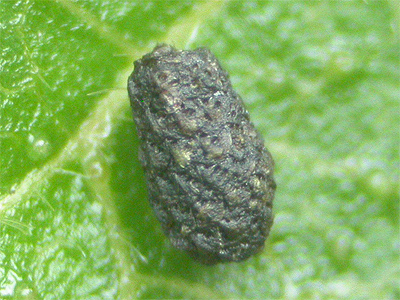 |
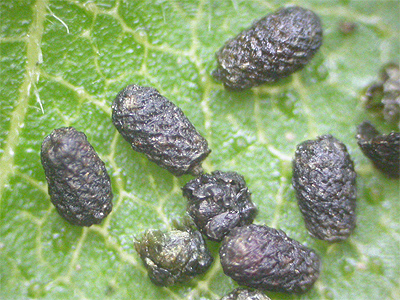 |
|
| .... | ||
| As with all the other Cryptocephalus species we have dealt with, the newly hatched pots become covered with a fungus, but this soon disappears. Kept on damp sand and periodically allowed to dry out with leaves of Hypericum for food, by July 6th the C. moraei pots measured around 1.25mm. | ||
| .... | ||
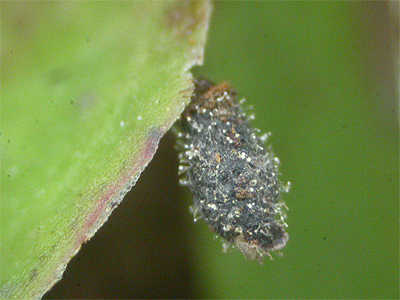 |
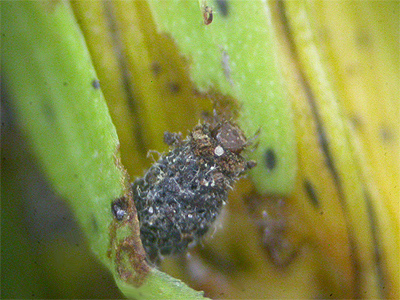 |
|
| .... | ||
| Measuring 2.25mm by July 16th, larval growth seems to have been slow, but the pots have been enlarged since the previous two photographs were taken ten days ago. The below right photograph is the first we have taken actually showing the enlargement slit made lengthways down the underside of the pot by the larva. The filling in process seems to start from the pot entrance, with the larva gradually backfilling the slit. | ||
| .... | ||
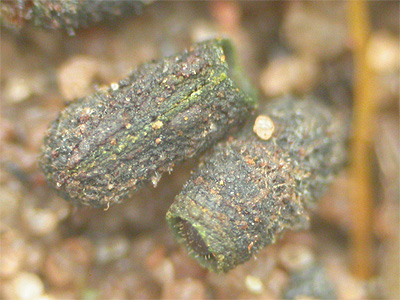 |
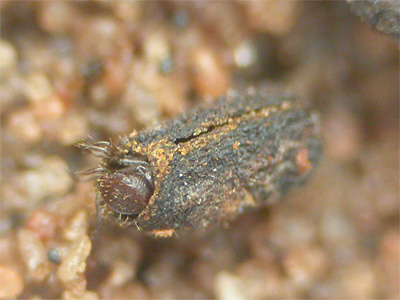 |
|
| .... | ||
| The pot entrance remains quite open and unsculptured still at this stage, with just enough clearance for the hairs around the outer edge of the larva's head. | ||
| .... | ||
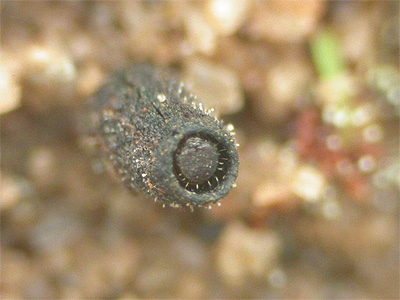 |
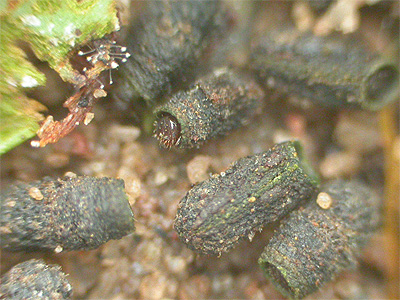 |
|
| .... | ||
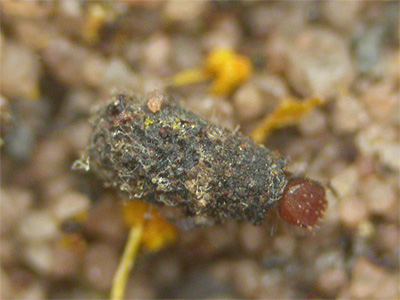 |
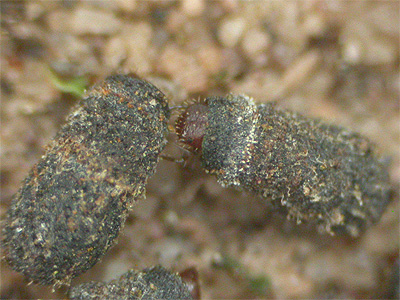 |
|
| .... | ||
| Photographed on August 11th, the C. moraei pots now measure around 4.5mm in length. They continue to do do well, feeding mainly on the flowers and developing seed heads of St John's Wort. Like the larvae of C. querceti, C. moraei are active climbers in captivity, getting well into the seed heads of the foodplant, as shown in the lower left photograph. | ||
| .... | ||
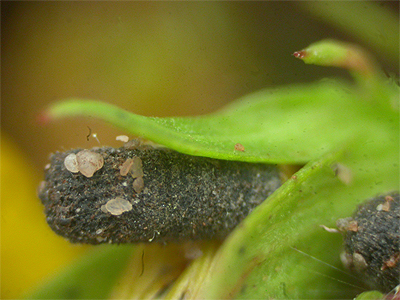 |
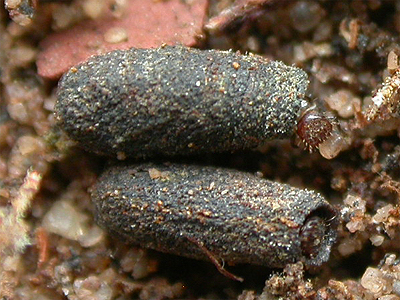 |
|
| .... | ||
| Photographed in mid-October 2011, the larvae are now inactive and only occasionally feeding on dried foodplant. But many have done some light construction work, mainly narrowing the neck of the pot. C. moraei lrvae seem to very similar in habits to those of C. fulvus, in that many of the pots will remain loosely attached to the foodplant. | ||
| .... | ||
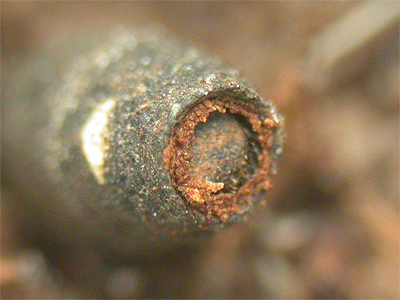 |
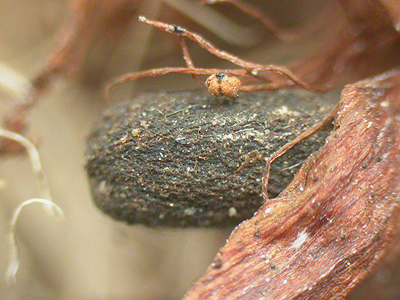 |
|
| .... | ||
| Near full grown larva
and larval pot, photographed in late April 2024. After a very
lengthy period of time, C. moraei eggs were obtained from a
female taken into captivity for several days, before being
re-released back at the site of capture. Eggs were freely produced and the larva were around half-grown by the late Autumn. Overwintering took place in a naturalised set-up kept in a brick out house and watered very occasionally, with the larvae spending the Winter 'head down' in moss. Overwintering success proved good and feeding resumed in March. By the last week of April, after rapid growth, most larvae appeared to be close to being full grown. The full-sized larval pot is very dark, almost black and seems very large for the size of the larva. |
||
| .... | ||
 |
 |
|
| .... | ||
| Closed off larval pot mid-May 2024. The pots are loosely fixed to the substrate face down, very similarly positioned to that adopted when overwintering. | ||
| .... | ||
 |
 |
|
| .... | ||
| Opened larval pot and newly hatched adult at the end of May 2024. | ||
| .... | ||
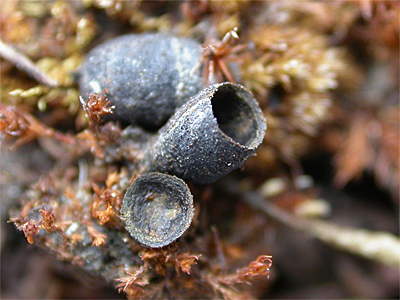 |
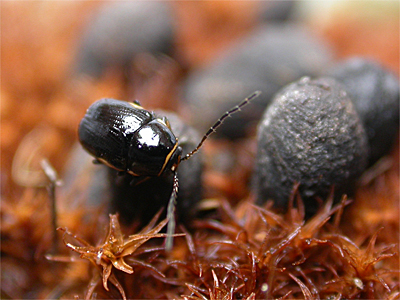 |
|